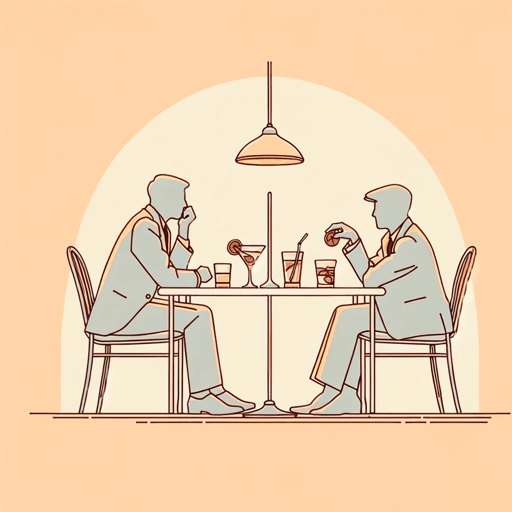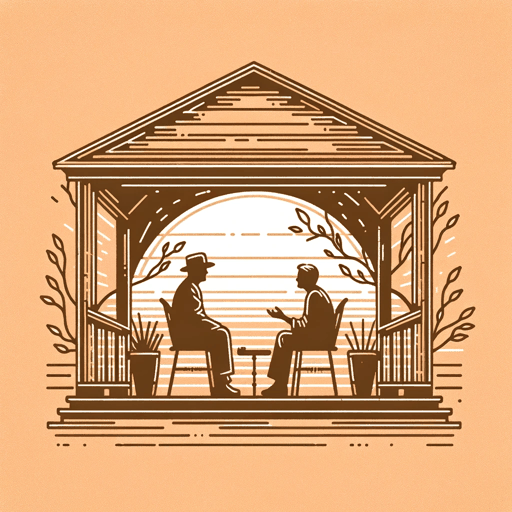32 pages • 1 hour read
Raymond CarverWhat We Talk About When We Talk About Love
Fiction | Short Story | Adult | Published in 1981A modern alternative to SparkNotes and CliffsNotes, SuperSummary offers high-quality Study Guides with detailed chapter summaries and analysis of major themes, characters, and more.
Summary and Study Guide
Summary: “What We Talk About When We Talk About Love”
American author Raymond Carver is best known for his short stories and his simple, precise writing style. He was a nominee for the National Book Awards as well as a Pulitzer Prize in Fiction. In 1988, he was inducted into the American Academy of Arts and Letters. Carver is one of the chief figures in the “Dirty Realism” movement of American writing, which became popular in the 1980s and provided vignettes of the dark side of ordinary people’s lives. In this genre, authors juxtapose realistic, banal settings with the characters’ overarching sense of futility and pain. Characters are depicted as those who have lost a sense of purpose in modern-day society and who drift through life, finding it difficult to grasp opportunities.
Carver was influenced by the works of Russian playwright and esteemed short story writer Anton Chekhov, Irish novelist and dramatist Samuel Beckett, and American novelist John Gardner. Carver published comparatively little in his lifetime—five short story collections and eight poetry anthologies—partly due to his alcohol use. Scholars credit Carver with reviving the popularity of the short story genre, and his work has impacted a number of late 20th-century writers, including American short story writers Richard Ford and Tobias Wolff. However, there is debate among scholars about whether Carver’s style was really his own or the creation of Carver’s editor, Gordon Lish, who severely altered the majority of Carver’s stories from 1971 up until 1983.
“What We Talk About When We Talk About Love” is one of Carver’s most famous short stories. Published in 1981, it gives its name to his second anthology of short stories, which established him as an important figure in the literary world. The 17 stories in the collection tackle the themes of love, marriage, failure, and the inability to communicate. Although the stories are separate from one another, they become more complex as the collection goes on and are designed to challenge the reader’s thoughts on what has gone on before. In the penultimate story, Carver thematically explores The Inability to Define Love and how Talking About Love Is Ineffectual.
Content Warning: The source text contains depictions of suicide, suicidal ideation, and domestic violence.
This guide cites the First Vintage Contemporaries e-book edition, published in May 2015.
The action revolves around two couples: Nick and Laura and Mel and Terri. Nick has been married for the second time to Laura, a legal secretary, for nearly 18 months. Mel McGinnis, a cardiologist who was once in a seminary, has two children with his ex-wife Marjorie. He has been married to Terri for four years. The story takes place over an afternoon as the four characters discuss the meaning of love. The couples spend the day drinking gin around Mel and Terri’s kitchen table in Albuquerque.
The story is told mainly in dialogue, and there is a lot of underlying tension, particularly between Mel and Terri, who bicker with one another throughout. Although Nick is the narrator of the story, the reader learns almost nothing about him. Instead, the focus is on Terri’s past relationship with her violent ex-partner, Ed, Mel’s attendance as a doctor at a road traffic accident, and Mel’s hatred toward Marjorie. Both Mel and Terri want Nick and Laura to judge the situations that they find themselves in and to validate their definitions of love, but the younger couple refuses to commit themselves.
As indicated by the title, love is one of the main themes of the story, along with the inadequacy of language to express love and the inability of the characters to move on from the past. The characters’ conversation suggests that love is found in action, not words. Mel believes that “real love is nothing less than spiritual love” (126), but then asks, “What do any of us really know about love?” (131). Terri thinks that Ed’s violence shows depth of feeling, causing Mel to describe her as “a romantic. Terri’s of the kick-me-so-I’ll-know-you-love-me school” (127). Laura says that she and Nick know what love is, though Nick only responds by kissing her hand. Terri is jealous of the younger couple’s overtly demonstrative behavior toward one another, snidely implying that their marriage will change for the worse as time goes on.
Terri gives a vivid snapshot of her life with Ed and how, when she left him for Mel, he terrorized and threatened to shoot them. Ed tried to kill himself with rat poison and then eventually shot himself. Despite Ed’s abusive behaviors, Terri sat by Ed’s bedside for three days until he died, an action which angered Mel. Mel tries to define what his idea of love is by providing a detailed description of an incident where a teenage drunk driver died after seriously injuring an elderly couple. Mel looked after the couple in hospital. They were both in the same room, swaddled from head to foot in plaster casts. The husband was depressed because he couldn’t see his wife. To Mel, the elderly husband’s despair indicated a deeply felt love that built over many years. However, Mel’s concept of love becomes less coherent as he becomes less convinced of what love really means. He talks about wanting to be a medieval knight, encased in armor. He then turns his attention to Laura, saying that he could easily fall in love with her and carry her off. Nick undercuts Mel’s romantic fantasies by clarifying that medieval armor had the capacity to suffocate the knights. Meanwhile, Terri nitpicks Mel and corrects his use of “vessel” with “vassal.”
As the afternoon wears on and the sun starts to disappear, the four characters finish off two bottles of gin. They drunkenly talk about going to a restaurant but don’t move, not even to turn on the overhead light. Silence falls as they run out of words to explain themselves, and all that remains is the sound of their beating hearts.
Related Titles
By Raymond Carver






